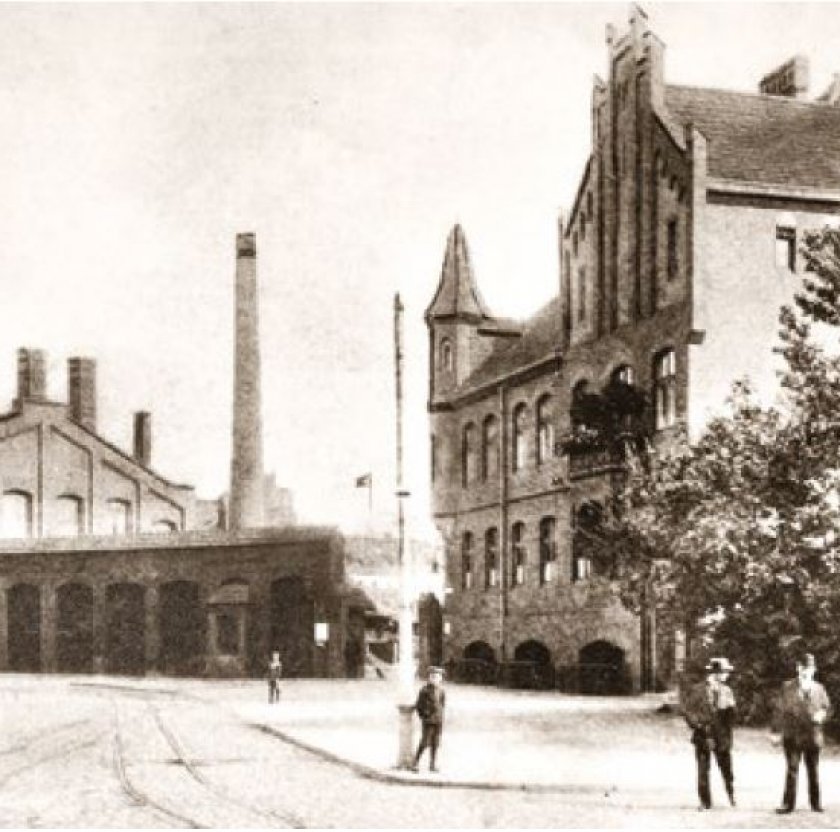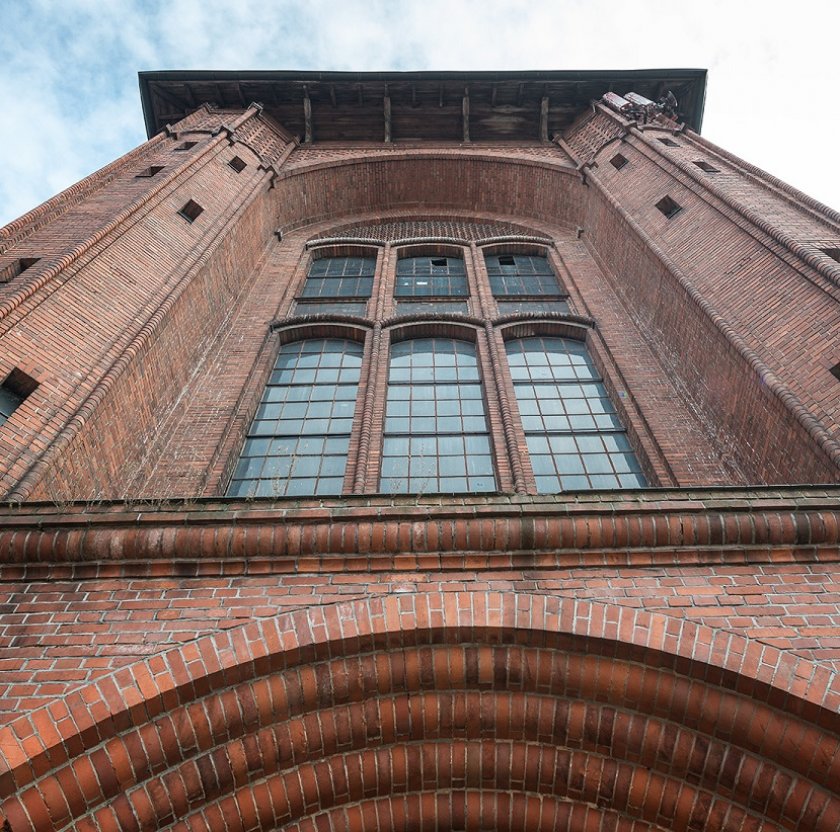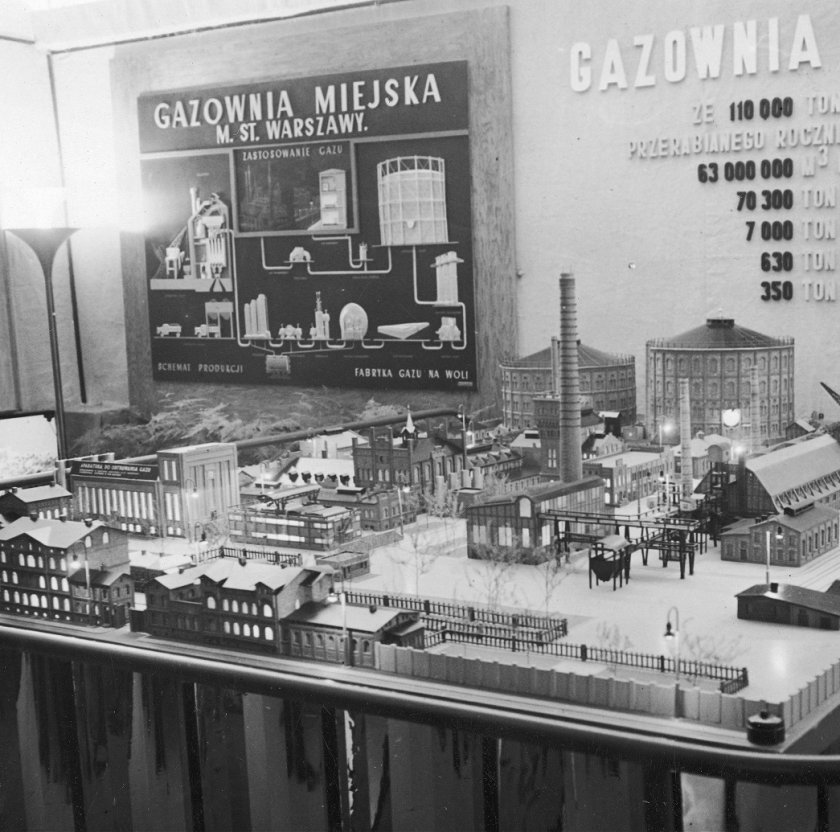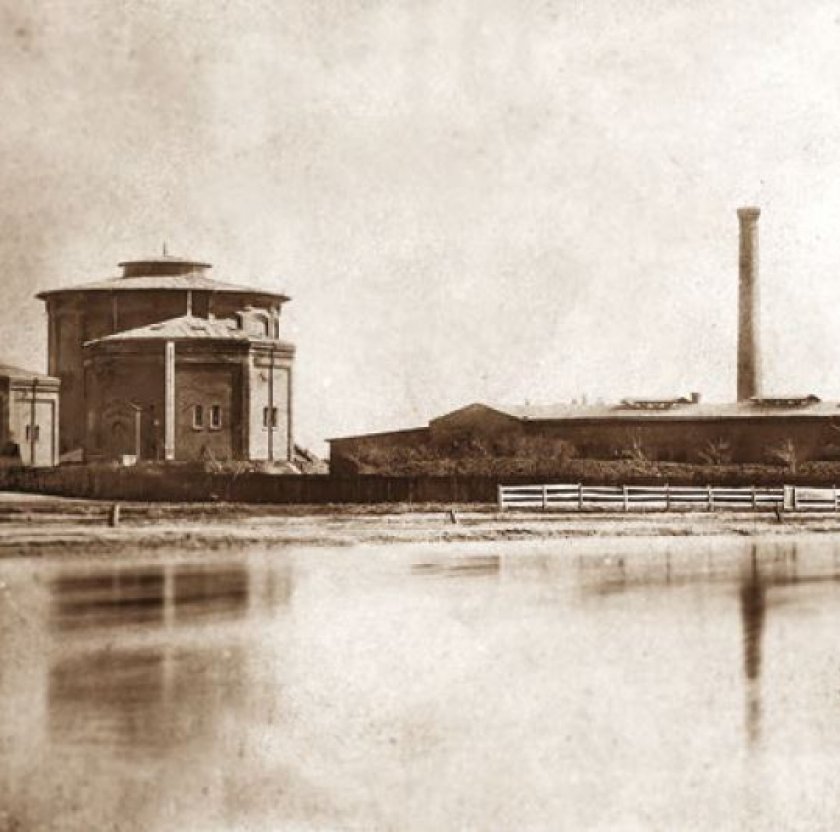date added:
19.05.2023
History of the Toruń Gasworks
 Fot. Gasworks in Toruń, 1914
Fot. Gasworks in Toruń, 1914
The design of this facility was entrusted to A. Kuhnell, a director of the Berlin Gasworks. In 1848, he presented his vision to the municipal council, according to which the gas plant was to supply 604 lanterns. However, the governors of Toruń were not happy with his design. In 1852, Kuehnell presented another design replacing iron retorts with chamotte ones.
Eventually, the third design was proposed by a resident of Berlin two years later and ultimately selected. The Gasworks was erected in an empty yard at the corner of Kopernika and Krzywa Wieża Streets, near medieval walls, in the vicinity of Starotoruńska Gate, from which the main road led west out of the city (before the so-called Caesar’s Arch was constructed).
The construction cost 77 thousand thalers. The plant became a part of the city landscape over a century of its operation, as seen from the other bank of the River Vistula.
The Toruń Gasworks started its operations on 15 December 1859; however, for the first time, gas was flown to customers precisely on Christmas Eve of that year as a kind of Christmas present for citizens. In first months of its operation, gas in Toruń reached just 112 recipients, including just 60 lanterns spaced around the centre of the Old and the New Town.
However, the city welcomed this novelty enthusiastically. After one year, the fuel reached 800 individuals, apart from successive lanterns. Howewver, the expansion of the grid, covering the majority of the then city area, and installing new lanterns took many successive years, during which new investments were necessary.
The Toruń Gasworks started its operations on 15 December 1859; however, for the first time, gas was flown to customers precisely on Christmas Eve of that year as a kind of Christmas present for citizens. In first months of its operation, gas in Toruń reached just 112 recipients, including just 60 lanterns spaced around the centre of the Old and the New Town.
However, the city welcomed this novelty enthusiastically. After one year, the fuel reached 800 individuals, apart from successive lanterns. Howewver, the expansion of the grid, covering the majority of the then city area, and installing new lanterns took many successive years, during which new investments were necessary.
The first one was the construction of three gas tans at Franciszkańska Street, near the Toruń pearl of architecture, the Gothic Church of the Assumption of the Blessed Virgin Mary. The largest of them, and the sole one with a brick jacket (from 1860) was converted into... the Planetarium at the beginning of the 1990s. Then, the branch plant was started in the Mokre district, at the northern edge of the city. Simultaneously, already in 1864, a gas line was routed along the bridge across the River Vistula, to the train station on its other site; in 1881, gas lights were provided in the district of Jakubskie Przedmieście, followed by the Bydgoskie Przedmieście two years later.
Since 1904, the Gasworks administration was located in a newly erected building at Bankowy Square (currently Rapackiego Square) at the former Starotoruńska Gate. Nearby, there were technical buildings and outbuildings, as well as coal storage.
Since 1904, the Gasworks administration was located in a newly erected building at Bankowy Square (currently Rapackiego Square) at the former Starotoruńska Gate. Nearby, there were technical buildings and outbuildings, as well as coal storage.
The interwar period brought the unstable economic situation to the municipal gasworks. With the economic downturn of the 1920s, the demand for gas dropped due to the progressing electrification. Attempts were made to prevent this, for example, by press advertisements encouraging the use of gas and attracting customers with lower rates. Furthermore, promotional activities were organised as presentations for restaurant owners, bakers, confectioners or housewives, and information sheets and leaflets were distributed. The network was also expanded further when it was possible, and the gasworks equipment was modernised and replaced with new.
Further expansion of the network occurred in the 1930s, when the lanterns were replaced with devices of a new type, with self-igniting automated lights. Before WWII, municipal gas lines' length reached 74 km, and the number of gas-powered street lanterns exceeded 1,000. However, the transport of increasing quantities of coal to the gasworks from the Toruń Miasto train station using special tram trailers ceased to be effective, and became a problem forcing further modernisations.
Further expansion of the network occurred in the 1930s, when the lanterns were replaced with devices of a new type, with self-igniting automated lights. Before WWII, municipal gas lines' length reached 74 km, and the number of gas-powered street lanterns exceeded 1,000. However, the transport of increasing quantities of coal to the gasworks from the Toruń Miasto train station using special tram trailers ceased to be effective, and became a problem forcing further modernisations.
In 1938, the construction of a new gasworks in Jakubskie Przedmieście at Szosa Lubicka Street started, with its own railway siding from the Toruń Miasto station. In June 1938, Leon Raszeja, the President of Toruń, laid the foundation stone for this construction. However, the investment was only completed in 1942, during the German occupation. The plant was put into operation when the production in the old gasworks was phased out. Earlier, successive facilities in the Mokre district and the gasworks in Podgórz town were closed on the other side of the River Vistula (included in the Toruń administrative borders in 1936).
Another important moment in the history of the Toruń Gasworks occurred in 1968 when the city moved to an electrical lighting system. And just four years later, natural gas reached city of Copernicus, and in consequence, the last Toruń Gaswork was closed at the end of the 1970s. Today, the building at Szosa Lubicka Street, following modernisation, has only administrative functions.
Another important moment in the history of the Toruń Gasworks occurred in 1968 when the city moved to an electrical lighting system. And just four years later, natural gas reached city of Copernicus, and in consequence, the last Toruń Gaswork was closed at the end of the 1970s. Today, the building at Szosa Lubicka Street, following modernisation, has only administrative functions.



